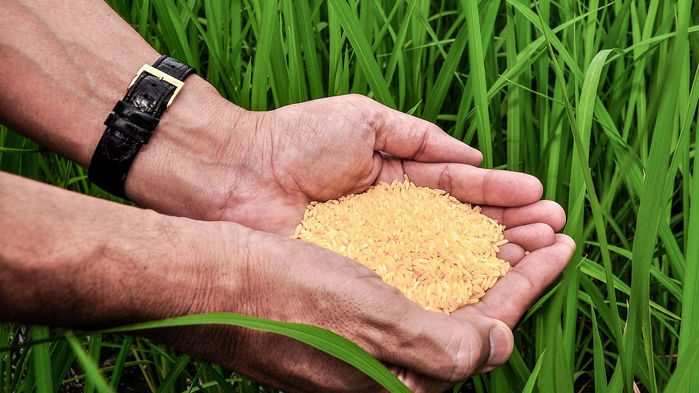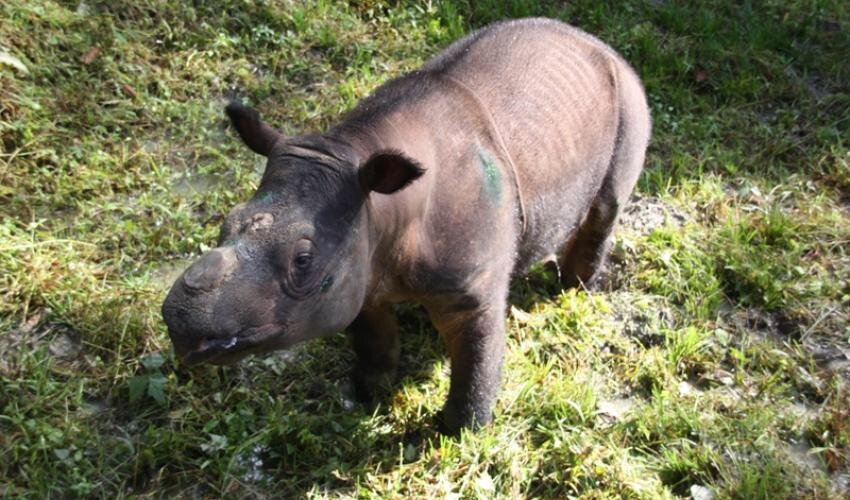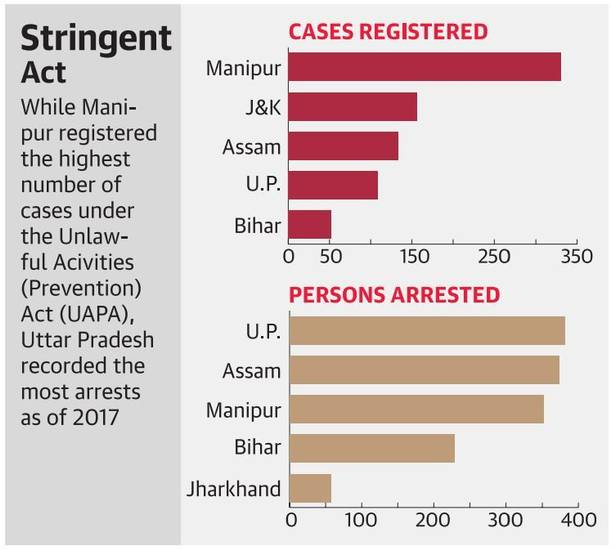Quota for Disabled in Panchayats
Why in News
The Chhattisgarh Cabinet has approved an amendment to the State Panchayati Raj Act, 1993, which makes mandatory the presence of a person with disabilities in all panchayats across the state.
- This implies that if differently abled members are not elected through the electoral process, then one member, either male or female, would be nominated by the government.
- The Cabinet has also decided to remove educational qualification as a requirement for the members of Panchayat.
Key Points
- Chhattisgarh will be the only State to have Persons with Disabilities (PwD) as members in all panchayats. It needs to be noted that there is no such quota for the disabled community in the elections to the central, state legislative assemblies and Panchayats (in general).
- The State government would also nominate two such members, one male and one female, to Janpads and Zilla Panchayats.
- Only being literate would be enough to contest election. The cabinet has decided to remove the educational stipulations of Class V and Class VII for members of the Panch and those above Panch, respectively.
- This in contrast to the Supreme Court’s judgement in 2015 ( Rajbala v. the State of Haryana) where it upheld the decision of the Haryana government which mandated “minimum” educational qualifications as an eligibility to contest panchayat elections in the State.
Constitutional and Legal Provisions Related to PwD
- Article 41 of the Directive Principles of State Policy (DPSP) states that State shall make effective provision for securing right to work, to education and to public assistance in cases of unemployment, old age, sickness and disablement, within the limits of its economic capacity and development.
- The subject of ‘relief of the disabled and unemployable’ is specified in the State List of the Seventh Schedule of the constitution.
- The Right of Persons with Disabilities Act 2016 provides reservation of 4% in government jobs and 5% in higher education institutes.
Panchayati Raj Institution in India
- Formation
- The term Panchayati Raj in India signifies the system of rural local self government.
- It has been established in all the states of India by the Acts of the state legislatures to build democracy at the grass root level.
- It was constitutionalised through the 73rd Constitutional Amendment Act of 1992.
- Constitutional Provisions
- The Part-IX to the Constitution of India has been entitled as ‘The Panchayats’.
- It consists of provisions from Articles 243 to 243 O.
- The Eleventh Schedule to the Constitution contains 29 functional items of the Panchayats.
- Three - Tier System
- Gram Panchayat at the village level,
- Janpad Panchayat at the intermediate/ block level and
- Zilla Panchayat at the district level
- Election of Members
- All the members of panchayats at the village, intermediate and district levels are elected directly by the people.
- The State Election Commission conducts elections to the panchayats.
- There is a five-year term of office to the panchayat at every level.
- Reservation of Seats
- Reservation of seats (both members and chairpersons) for Scheduled Castes (SCs) and Scheduled Tribes (STs) in panchayats at all three levels.
- Reservation of one-third seats (both members and chairpersons) for women in panchayats at all the three levels.
- It is to be noted that providing reservation of seats (both members and chairpersons) for backward classes in panchayats at any level is a voluntary provision.
- Powers and Functions
- The State Legislature may endow the Panchayats with such powers and authority as may be necessary to enable them to function as institutions of self-government.
Maharashtra Bill to Protect Mediapersons
Why in News
The President of India has given assent to the Maharashtra Media Persons and Media Institutions (Prevention of Violence and Damage or Loss to Property) Bill, 2017.
- Maharashtra is the first state to pass legislation which ensures protection for journalists.
Key Provisions
- The bill considers violent attacks on media persons a non-bailable offence.
- The offence shall be cognizable (police officer has the authority to make an arrest without a warrant and to start an investigation with or without the permission of a court) and triable by a first-class judicial magistrate.
- Anyone who commits or attempts to commit any act of violence against journalists or media houses shall be punished with jail terms up to three years or with a fine up to Rs 50,000 or with both.
- A media institution has been defined as any registered newspaper, news channel, news-based electronic outlet or news station establishment.
- A media person means a person whose principal vocation is that of a journalist, who is employed as a journalist, whether on a regular or contract basis.
- Any offence against a media person will be investigated by a police officer above the rank of a Deputy Superintendent of Police.
- The assailant would also be liable to reimburse the medical expenditure incurred by the media persons in the attack.
- The offender is also liable to pay compensation for damage or loss caused to the property of the media person or the media house as determined by the court.
Significance
- The act will ensure the safety of journalists in exercising freedom of speech and expression.
- It ensures the implementation of the “Safety and Security of Journalists” advisory (2017) by the Ministry of Home Affairs.
- The advisory was issued days after Bengaluru-based journalist Gauri Lankesh was shot dead in 2017.
- It will help to improve ranking under the World Press Freedom Index.
- India ranked 140th out of 180 countries in this index released by ‘Reporters Without Borders’.
- According to the report violence against journalists including police violence, attacks by Maoist fighters and reprisals by criminal groups or corrupt politicians is one of the most striking characteristics of the current state of press freedom in India.
Cases under Unlawful Activities (Prevention) Act
Why in News
As per the National Crime Records Data (NCRB), more than 35% cases registered under the Unlawful Activities (Prevention) Act (UAPA) were recorded in Manipur.
Key Points
- Of all cases registered under UAPA in 2017, Jammu and Kashmir (J&K) recorded 17%, Assam recorded 14%, Uttar Pradesh recorded 12% and Bihar accounted for 5% of total cases.
- Uttar Pradesh topped the States in the number of arrests made with 382 arrests (nearly one-fourth) of the 1,554 persons.
- It is followed by Assam-374, Manipur-352, J&K-35 and Jharkhand-57.
Unlawful Activities (Prevention) Act
- It was passed in 1967 and aims at effective prevention of unlawful activities associations in India.
- The 2004 amendment, added “terrorist act" to the list of offences to ban organisations for terrorist activities, under which 34 outfits were banned.
- Till 2004, “unlawful" activities referred to actions related to secession and cession of territory.
- Under the UAPA, the investigating agency can file a charge sheet in maximum 180 days after the arrests and the duration can be extended further after intimating the court.
- The Act assigns absolute power to the central government, by way of which if the Centre deems an activity as unlawful then it may, by way of an Official Gazette, declare it so.
- It has death penalty and life imprisonment as highest punishments.
- In August, Parliament cleared the Unlawful Activities (Prevention) Amendment Bill, 2019 to designate individuals as terrorists on certain grounds provided in the Act.
Golden Rice
Why in News
Bangladesh is to be the first country to approve golden rice planting in the country.
- Golden rice is a genetically modified variety of rice.
- It is developed by the Philippines-based International Rice Research Institute (IRRI).
- This variety of rice is claimed to be able to fight vitamin A deficiency.
- Vitamin A deficiency is the leading cause of blindness among children and can also lead to death due to infectious diseases such as measles.
- This rice variety will not be more expensive than the conventional variety.
- The presence of beta-carotene pigment is the reason for its golden colour.
- The conventional rice is naturally low in the pigment beta-carotene.
- The beta-carotene is used by the human body to make vitamin A
Vitamin A Deficiency
- Vitamin A is a fat-soluble vitamin that maintains healthy vision, skin, bones and other tissues in the body.
- Vitamin A Deficiency (VAD) can lead to night blindness, a higher risk of the throat, chest, and abdomen infections, follicular hyperkeratosis (dry, bumpy skin), fertility issues and delayed growth in children, etc.
- Women and children are the most vulnerable to VAD which is the leading cause of childhood blindness and inability of the immune system to combat disease.
International Rice Research Institute (IRRI)
- IRRI is an independent, non-profit, research and educational institute, founded in 1960 by the Ford and Rockefeller Foundations with support from the Philippine government.
- The institute, headquartered in Los Baños, Philippines, has offices in 17 rice-growing countries in Asia and Africa.
- The IRRI South Asia Regional Centre is located at Varanasi (Uttar Pradesh).
- It aims to improve the health and welfare of rice farmers and consumers; and protect the rice-growing environment for future generations.
Sumatran Rhino
Why in News
The Sumatran rhinoceros has become extinct in Malaysia, after the death of the last rhino in the country.
Sumatran Rhino
- Its scientific name is Dicerorhinus sumatrensis and is the smallest of all rhino species.
- It is listed as Critically Endangered on the IUCN Red List of Threatened Species.
- The World Wild Life (WWF) estimates that there are only about 80 of them and are left mainly in Sumatra and Borneo in Indonesia.
- Black Rhino, White Rhino, Greater One-Horned Rhino, Javan Rhino and Sumatran Rhino are the five different species of Rhino.
- The three species of Rhino in Asia — Greater one-horned, Javan and Sumatran. Javan and Sumatran Rhino are critically endangered and the Greater one-horned (or Indian) rhino is vulnerable in the IUCN Red List.
- They are spread across India, Nepal, Bhutan, Indonesia and Malaysia. These countries are also known as Asian Rhino Range Countries.
- Only the Great one-horned rhino is found in India.
Rohtang Tunnel
Why in News
The world’s longest tunnel (8.8km) above 10,000 feet -Rohtang Tunnel is under construction to connect villages in Lahaul-Spiti (Himachal Pradesh) to the rest of the country even during winters.
- In winters,heavy snowfall in the Rohtang pass cuts off villages in Lahaul-Spiti From the rest of the country.
Rohtang Pass
- Rohtang Pass (elevation 3,978 m) is located in the state of Himachal Pradesh.
- It is present on the Pir Panjal Range of Himalayas.
- It connects the Kullu Valley with Lahaul and Spiti Valleys of Himachal Pradesh.
- The Ravi river rises west of the Rohtang pass in the Kullu hills of Himachal Pradesh.
Indian Railways Institute of Financial Management
The Railway Board Chairman has inaugurated the Indian Railways Institute of Financial Management (IRIFM) at Moula Ali in Hyderabad.
- The Institute will impart structured and professional training to finance and accounts officers of the railways.
- Built by the Rail Vikas Nigam Limited (RVNL), IRIFM would be meeting 90% of its electricity needs through solar power, is covered with rainwater harvesting structures and has a 100% wastewater treatment plant.
- RVNL has also been tasked for building India's first railways university - National Rail and Transportation Institute, at Vadodara (Gujarat).
Rail Vikas Nigam Limited
- RVNL functions as an extended arm of the Ministry of Railways (MoR) working for & on behalf of MoR.
- It has been granted Mini Ratna-I status in 2013.

